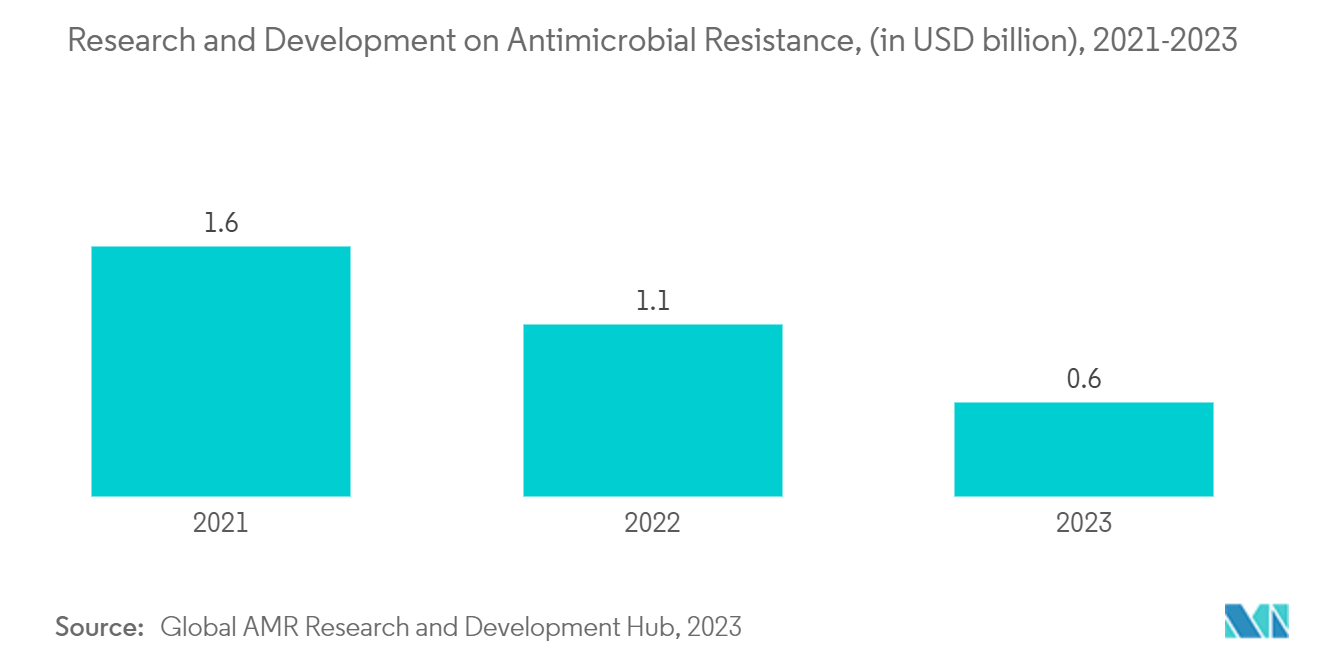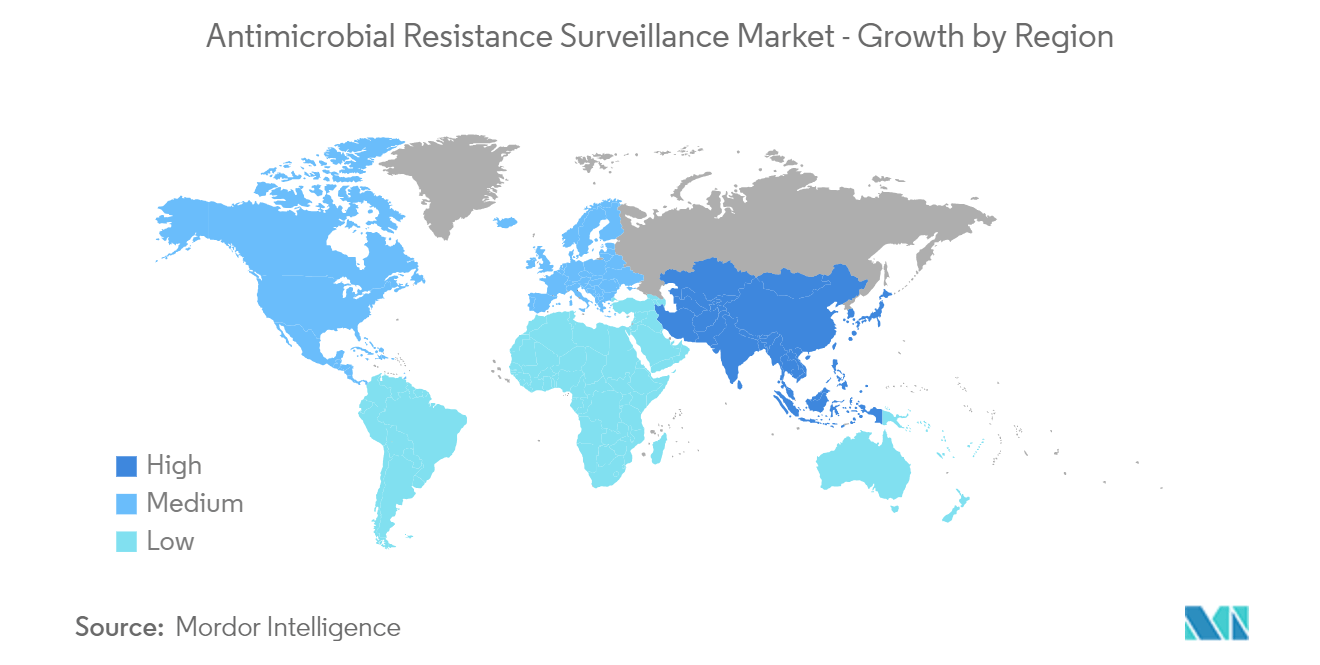Market Trends of Antimicrobial Resistance Surveillance Industry
The Clinical Diagnostics Under Application Segment is Expected to Hold a Significant Share in the Market
Clinical diagnostics occupy a significant market share due to the increased prevalence rate of antimicrobial resistance microbial infections and the urgent need to improve patient outcomes for those suffering from antimicrobial infections like ESKAPE (Enterococcus faecium, Staphylococcus aureus, Klebsiella pneumoniae, Acinetobacter baumannii, Pseudomonas aeruginosa, and Enterobacter species) because they represent the great threat to humans. In addition, the government's initiatives to improve clinical diagnostics centers working capabilities are also expected to drive the market. For example, according to the Department of Finance Canada Report 2022, the federal government introduced Bill C-17, which was to provide 2 billion (CAD) to different provinces and territories of the country to improve clinical diagnostic activities to control various diseases like infections caused by drug-resistant microbes. Additionally, in 2021, 25 European Union countries also launched national action plans to tackle antimicrobial resistance by investing 1.4 billion (EUR) to support ongoing surveillance of AMR through enhanced laboratory network capacity across the EU region.
Therefore, the higher prevalence rate of antimicrobial resistance infection, the urgent need to improve patient outcomes, and government investments are expected to boost the clinical diagnostic segment, which is estimated to witness significant growth over the forecast period.

North America is Expected to Dominate the Antimicrobial Resistance Surveillance Market
North America is expected to dominate the market owing to factors such as high awareness and prevalence rate of antimicrobial resistance to infectious diseases, government initiatives in the region to combat antibiotic resistance, and the presence of key market players in the region. According to the Centers for Disease Control and Prevention (CDC) database 2023, in the United States, more than 2.8 million antimicrobial-resistant infections (ARI) occur every year. To combat the prevalence rate of ARI, the United States government has invested 197 million (USD) in 2023. According to the CDC, these investments are expected to be used to develop preventive solutions and effective diagnosis and surveillance of antibiotic-resistant infections in the CDC’s Antimicrobial Resistance Laboratory Network networks (AR Lab Network). These cutting-edge laboratory facilities rapidly detect and store data about antimicrobial resistance, which will likely help doctors make informed decisions about the treatment.
Therefore, owing to the high prevalence rate of antimicrobial resistance microbial infections, increased investments to fight ARI by establishing new laboratory facilities are expected to drive the market in the North American region.


